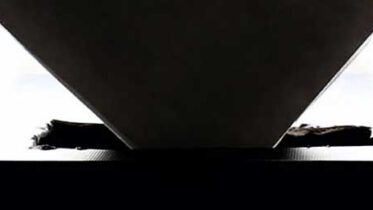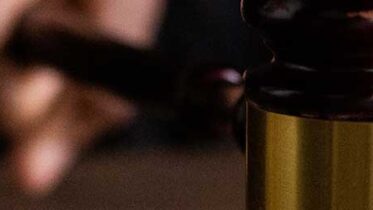Mexican Legal Perspective on Divisional Patenting
- 19 August 2022
- Articles
On July 15, 2022, a jurisprudence was issued, determining the statute of limitation to voluntarily request the division of a patent based on provisions from Industrial Property Law (IPL) in force until November 2020, such limit is the stage of the substantive examination, it means no later than the granting notice is notified. This jurisprudence is enforceable for judges and magistrates since August 1, 2022.
This article briefly explains, what the jurisprudence solved and its scope from a legal perspective, allowing us to appreciate that, this decision clarifies important issues in divisional patents, determining the applicable criteria to be followed in conflicts ruled by the IPL in force until November 2020.
- What is jurisprudence by contradiction?
Jurisprudence is a case law interpretation made by a judge on the application or scope of a Law or a provision in a specific case. A jurisprudence by contradiction jurisprudence arises when two judges or courts publish resolutions with conflicting interpretations, whereby a higher judicial body or organ defines the criterion to be followed in the future.
In this case, all Mexican judges and courts must follow the interpretation of the Law for identical cases presented to them to resolve.
- Which were the contradictory criteria?
Two courts issued divergent criteria on the statute of limitation to voluntarily apply for a divisional patent, under provisions of the abrogated IPL:
- The first criterion (dated 2016) sustained that, articles of the IPL and its regulations (arts. 43, 44 and 48 of the IPL and 24 of the regulations) only provide for patent division by the requirement of the authority, and not for voluntary divisions.
Then the Federal Circuit Court, held that the right to claim for voluntary division of a patent arises from Paris Convention provisions [4, paragraph G)], and that an individual could request the division of a patent application at any time, since there is no statute of limitation set forth in the IPL and its regulations, and following the pro homine principle the must obtain the major benefit on his behalf.
- The second criterion (dated 2020) agreed that the right to claim voluntary division of a patent arises from the Paris Convention and that the IPL does not provide for such figure.
However, this Court based its interpretation on a systemic analysis of the patenting procedure established in the IPL, reaching the conclusion that it is in the stage of the substantive examination where, among other analyses, an examiner must determine whether the patent meets the requirement of unity of invention and, if not, it may require the division of the patent, so that in the case of voluntary divisions, the appropriate time to request it is before the conclusion of the substantive examination.
Also considered that the contrary would create the risk of modifying the claims already analyzed allowing the risk of granting the applicant additional protection due to the voluntary division.
- How the upper body solved the contradiction?
The Plenary of the Federal Circuit Courts was the higher body that unified the discrepant criteria by means of the contradiction of thesis 1/2021 published on July 22, 2022.
This body resolved that:
- There is indeed a contradiction between the criterion held by the 16th Federal Circuit Court issued in 2016 and the Criterion issued in 2020 by the 9th Federal Circuit Court.
- The systemic analysis of the IPL does not conflict with the pro homine principle, since the authority must follow both the principles of the Constitution and the law, creating decisions formally justified and supported by certain facts, so voluntary applications for patent division must follow the principles governing the examination of form and substance.
- In conclusion, the authority must determine whether the patent application refers to a single invention, or to a group of inventions related to each other, forming a single inventive concept. That this examination is carried out within the substantive examination stage, therefore, a voluntary request to divide a patent outside that stage is inadmissible, since such division may alter the conditions and characteristics of the invention already analyzed, modifying the claims.
Therefore, the conclusion of the substantive examination is the limit for requesting the division of a patent application.
- What are the effects of this new case law?
This jurisprudence is a mandatory criterion for Mexican judges and magistrates, which they will apply in identical cases.
- From when does jurisprudence become effective?
This criterion became effective as of August 1, 2022, which means that as of that date identical cases must be resolved by Judges and Magistrates applying this criterion.
Two clarifications are in order:
- Matters previously resolved by judges and magistrates remain untouched and the resolution they had should not be affected by this new jurisprudence, and 2.
- Divisional patents previously granted that are not submitted for review remain valid and cannot be revoked ex officio by the administrative authorities.
- Can the criterion be applied to divisional applications filed under the New Law?
The answer is NO because the cases analyzed concentrate on the provisions of the IPL. Secondly, the new Law, Federal Law for the Protection of Industrial Property (LFPPI), does contemplate the opportunity period to file for the division of patents.
According to the new LFPPI, the opportunity to divide a patent may occur in the following cases:
1.- as a response to a requirement of the IMPI itself, at the latest before the end of the term granted to give a response.
2.- As a voluntary request for division, it must be made:
a) Before the issuance of the resolution that denies, rejects, considers abandoned or withdrawn such application;
b) Within the term to respond to the official notice notifying the patent grant.
3.- Before an international application is considered withdrawn under the Patent Cooperation Treaty.
The case law resolves a problem that arose between 2016 and 2020, with the application of the IPL, which although it does not affect applications filed under the LFPPI, it may lead to a review of divisional patents granted based on the IPL, to know if they may be subject to attacks from third parties based on this recent case law.
- What are the effects of this new case law?
This jurisprudence is a mandatory criterion for Mexican judges and magistrates, which they will apply in identical cases as of August 1, 2022, l so that:
- Its application will be mandatory only within litigation.
- The application corresponds to the judges and magistrates, although the authorities for simplicity may adopt the criterion.
In addition, the conditions of the case under analysis must be repeated:
- That it is the study of a divisional patent granted under the validity of the abrogated Industrial Property Law.
- That the request for division arises voluntarily from the applicant himself, that is to say, that it does not derive from a requirement of the IMPI itself.
- That the purpose of the analysis is to determine whether the request for division has been made within the period allowed for such purpose.
If the situation to be judged differs in any of these three points, then the mandatory application of the case law is not appropriate and the judge may cite it as a guide in his analysis, but the judge or magistrate may depart from the criterion.
- When does jurisprudence become effective?
This criterion became effective as of August 1, 2022, which means that from that date identical cases must be resolved by Judges and Magistrates applying this criterion.
Two clarifications are in order:
- Matters previously resolved by judges and magistrates remain untouched and the resolution they had should not be affected by this new jurisprudence, and 2.
- Divisional patents previously granted that are not submitted for review remain valid and cannot be revoked ex officio by the administrative authorities.
- Can the criterion be applied to divisional applications filed under the New Law?
The answer is NO because the cases analyzed concentrate on the provisions of the IPL. Secondly, the new Law, Federal Law for the Protection of Industrial Property (LFPPI), does contemplate the opportunity period to file for the division of patents.
According to the new LFPPI, the opportunity to divide a patent may occur in the following cases:
1.- as a response to a requirement of the IMPI itself, at the latest before the end of the term granted to give a response.
2.- As a voluntary request for division, it must be made:
a) Before the issuance of the resolution that denies, rejects, considers abandoned, or withdrawn such application.
b) Within the term to respond to the official notice notifying the grant of the patent.
3.- Before an international application is considered withdrawn under the Patent Cooperation Treaty.
The case law resolves a problem that arose between 2016 and 2020, with the application of the IPL, which although it does not affect applications filed under the LFPPI, it may lead to a review of divisional patents granted based on the IPL, to know if they can be subject to attacks from third parties based on this recent case law.










